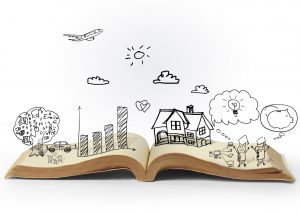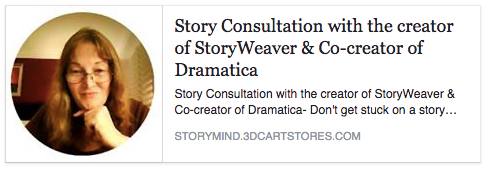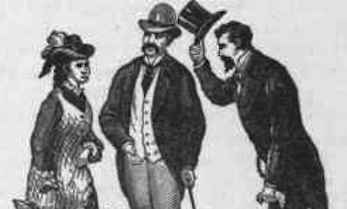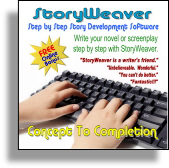 Over the years, there has been considerable discussion as to whether Dramatica’s rather complex storyforming process could be operated by a natural language artificial intelligence system that could read a story and parse the text to answer Dramatica’s questions and arrive at an accurate structural model of the manuscript under study.
Over the years, there has been considerable discussion as to whether Dramatica’s rather complex storyforming process could be operated by a natural language artificial intelligence system that could read a story and parse the text to answer Dramatica’s questions and arrive at an accurate structural model of the manuscript under study.
Ranging a little more widely, over the past five years we have done considerable work for the intelligence agencies in Washington (yep, all those ones with the three letter acronyms) using narrative to try and understand the motivations of and predict the likely behavior of individual terrorists and terror groups, and even to determine the narratives at work in complex conflicts among groups of nations.
While we have had much success is accomplishing those goals, virtually every agency had one item on their wish list that stood out above all the rest: to be able to hook Dramatica into their raw data streams and have it identify narratives at work in the world that are of interest to our government and to automatically build storyforms that accurately describe those narratives so that what is currently invisible might be drawn out of that tremendous volume of ever-changing data.
Though we have outlined the requirements of such a system, we have not yet found a natural language tool capable of achieving this function. Still, we continue to look, scanning the horizon for potential solutions. And when we do, here are some of the standards by which we judge them:
There are two types of context-specificity: Reference and Inference. References include direct and indirect, as well as idioms/metaphors/similes. Inferences include contextual information that never specifically refers to the subject at all, but just as with a storyform, you paint points around it without directly addressing it, rather like a parabolic mirror in which rays coming from all angles converge on a single spot.
So, in the case of References – we need to know how well it parses natural language that contains:
1. Direct references, i.e. “His goal is to control the world.”
2. Indirect references, i.e. “He wants to control the world”
3. idioms/metaphors/similes, i.e. “The world is his oyster”/ “He is Alexander The Great” / “He’s like another Alexander The Great”
4. Inferences, i.e. “There is no level of control beyond his aspirations, which range beyond nations to the very planet itself.”
Each of these can be tagged as the Goal of the protagonist under study.
And so, a truly powerful A.I. natural language system would be able to address all four of these with some degree of accuracy. Four – imagine that – a quad of functions it must excel at.
The main thing we always keep in mind when evaluating a system is that in terms of natural language recognition, there is nothing unique about the needs of Dramatica compared to any other system. It just just a black box that requires specificity of input accurate to the subject under study.
Just though y’all might like to hear about another “hidden” area in which Dramatica is at work in the world.
Melanie


 In this step, we’ll explore how to clear your mental decks to make room for all the story development to come.
In this step, we’ll explore how to clear your mental decks to make room for all the story development to come.


 Perhaps the best way to instill real feelings in a character is to stand in his or her shoes and write from the character’s point of view. Unfortunately, this method also holds the greatest danger of undermining the meaning of a story.
Perhaps the best way to instill real feelings in a character is to stand in his or her shoes and write from the character’s point of view. Unfortunately, this method also holds the greatest danger of undermining the meaning of a story. Some stories introduce characters as people and then let the reader/audience discover their roles and relationships afterward. This tends to help an audience identify with the characters.
Some stories introduce characters as people and then let the reader/audience discover their roles and relationships afterward. This tends to help an audience identify with the characters.
 Over the course of the story, your reader/audience has come to know your characters and to feel for them. The story doesn’t end when your characters and their relationships reach a climax. Rather, the reader/audience will want to know the aftermath – how it turned out for each character and each relationship. In addition, the audience needs a little time to say goodbye – to let the character walk off into the sunset or to mourn for them before the story ends.
Over the course of the story, your reader/audience has come to know your characters and to feel for them. The story doesn’t end when your characters and their relationships reach a climax. Rather, the reader/audience will want to know the aftermath – how it turned out for each character and each relationship. In addition, the audience needs a little time to say goodbye – to let the character walk off into the sunset or to mourn for them before the story ends.